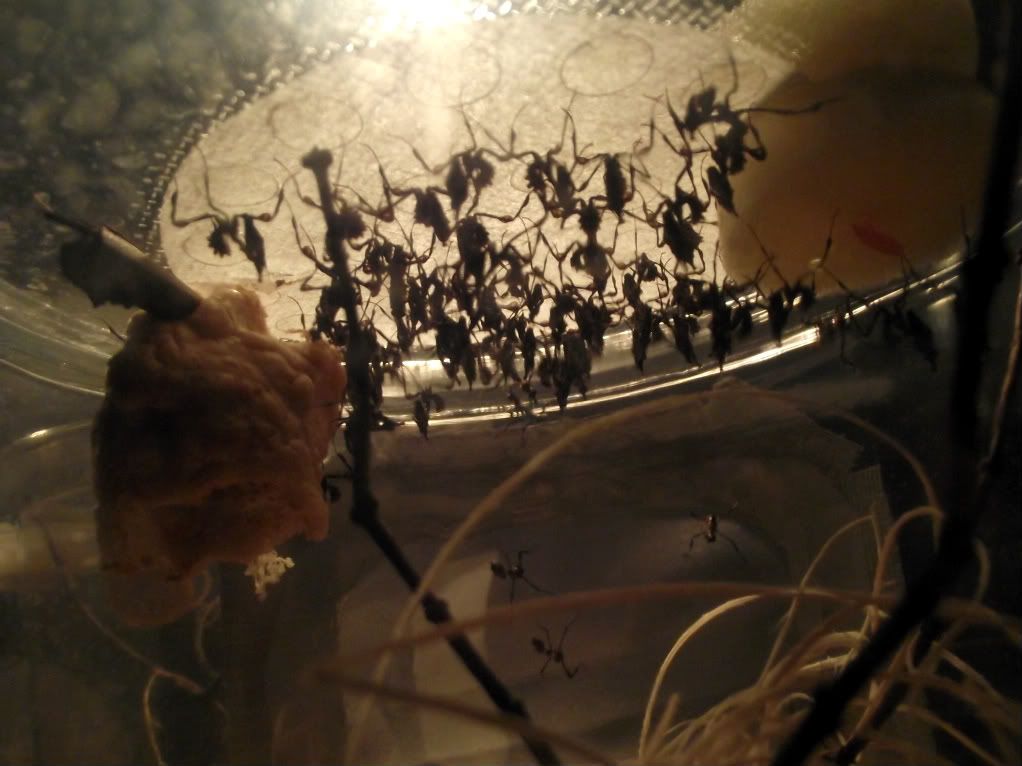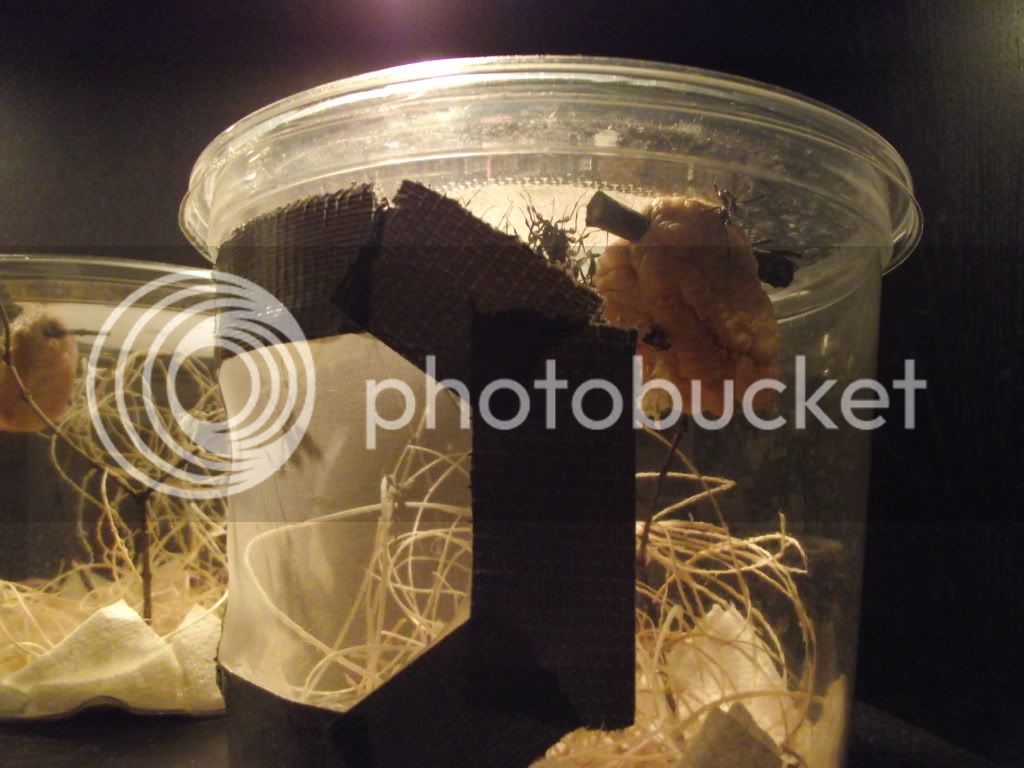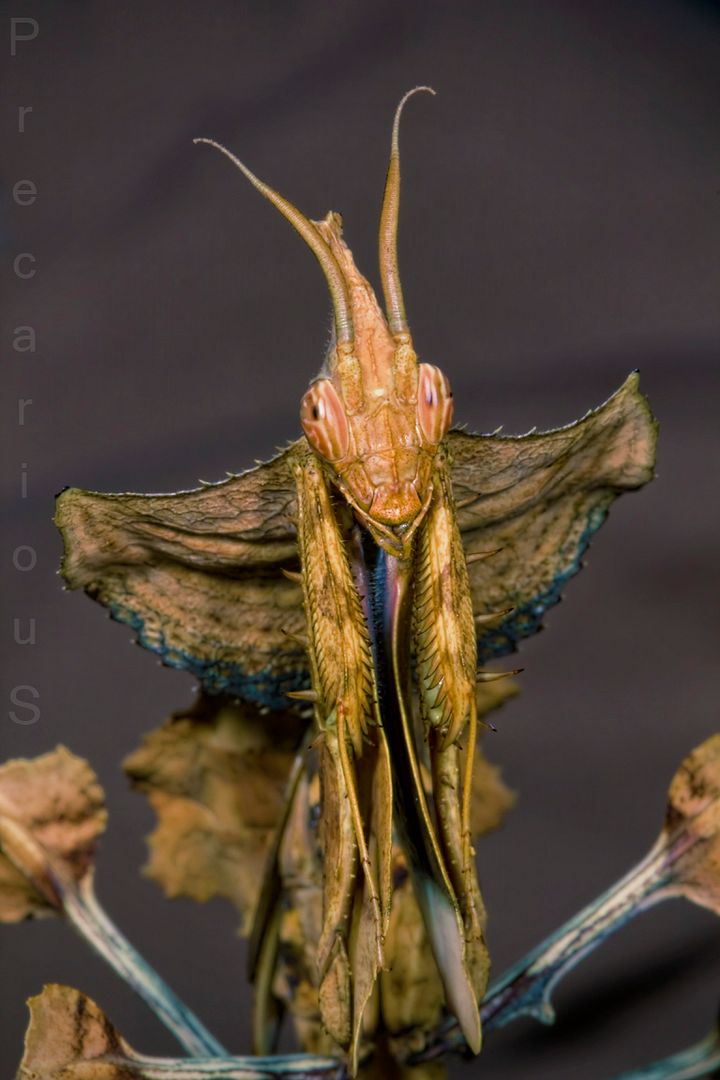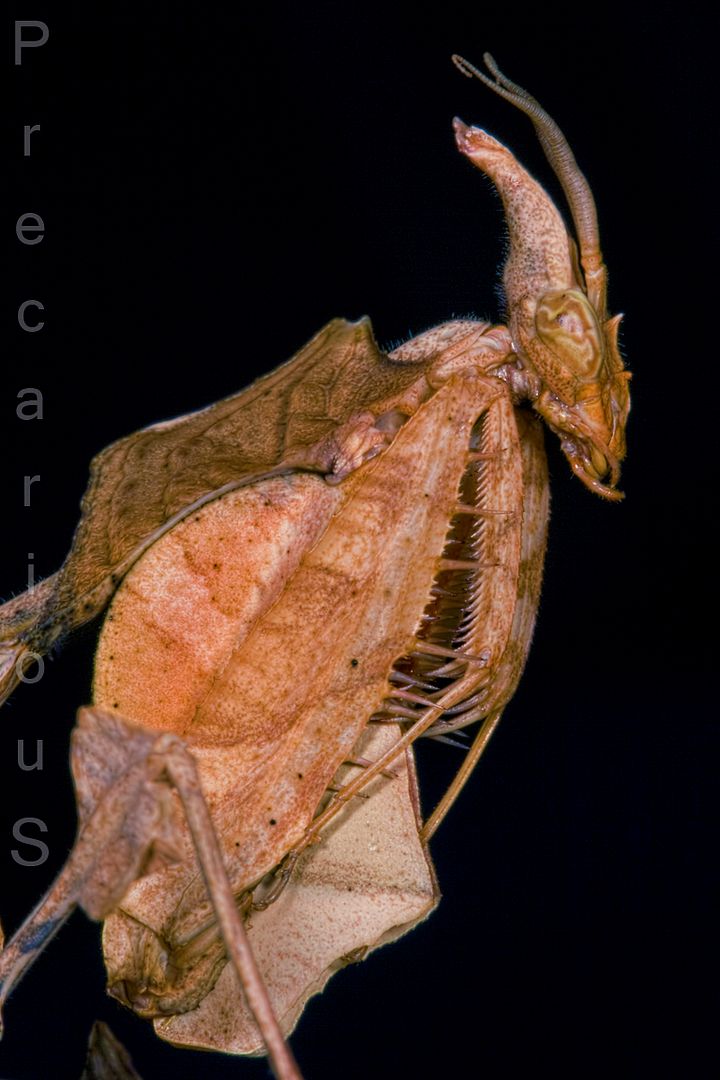sporeworld
Well-known member
My first boy looks to be winding down. I didn't record what day he molted, but it's been more than a month, so I'm pretty happy with that. He did his "job", and can now rest in peace. Good night, sweet prince!

I would guess they are unable to hang at the proper angle. What I see them do is hang by the tips of the raptor claws and the first set of legs. That puts their body at about 45 degrees and the wings almost vertical. If the wings dry before they are fully inflated they will be puffed up and won't lay right. All you can really do is give them plenty of branches and other perches to hang from so they can find the right spot.I need advice... My first two males molted to adults, and they have the same condition. They don't hold their wings tight to their body. I'm not sure how to explain it. I can take a photo if you don't know what I'm talking about. The first one has a slight crease in one of his inner wings. When he was inflating, I don't think he was in the right position. The second one molted yesterday morning, and I kept an eye on him. He appeared to be doing everything right, but his wings still look like the others. Now I've had a male Ghost mate with a female with this condition, but I've never had a male molt with a female that didn't have the wings folded correctly. Any ideas what might be causing this and whether there is anything I can do to prevent this? My third (and last male) is inflating his wings now.
Also, I would love to know if people kept track of how many nymphs they started with, what instar they were when they got them, and how many of those made it to adults.








I predict the difference you will notice is those fed exclusively on ground insects will soon die of starvation... unless you plan on hand-feeding them just about every meal. I can appreciate wanting to find the ideal conditions but I would scratch that variable off the list. They prefer flying insects over any other feeders without exception. I think everyone here would agree with that assessment.I would also like to separate a few nymphs that are in the preferred living conditions and feed them exclusively on ground insects like roaches while the others will be fed exclusively flying insects to see if I notice a difference.


Ha-ha...<Precarious> Yes, yes you should. Come into my lair, let me show you my drugs.
Precarious reaches into his trenchcoat and produces awesome pictures that inspire diabolical greed* to mantid fans.
I just wanted to say that most of these have been successfully kept in screen cages and or anything else that can help Idolo's to the top of the cage. I've kept unicorn mantids before and I'm pretty sure you would agree with me on saying that they usually stick to their little spot at the top of the enclosure and enjoy just hanging around in one spot, even for days at a time. If you heard of B. lateralis they are a species of roach that are increasingly becoming more popular as feeders and are preferred over crickets by many hobbyists. In my experience if you take these guys out of hiding and drop them into the open they will scamper around like mad and I've used these to feed my unicorn mantids. I'll just drop a few into its enclosure and if its a screen/mesh/ butterfly netting type deal they would usually run all over the walls and to the top where they were eaten but you will have a few smart ones that stay at the bottom, I just hand feed the left overs.I predict the difference you will notice is those fed exclusively on ground insects will soon die of starvation... unless you plan on hand-feeding them just about every meal.
No sweat, I wasn't trying to pick on you or anything. I just want you to have happy, healthy nymphs if you do decide to try Idolo. But be aware they are not Unicorns by a long shot. I've never had a Unicorn mismolt even with minimal attention. You won't get that result with Idolo. In their case humidity will make a difference. Ask anyone here who keeps them. And you are right to focus on the surfaces in your enclosure, especially for later molts.The thing I'm worried about most is the surface they will molt on and molting issues. I'm not really worried about humidity or heat, I've kept things that stress the importance of heat and humidity which I pretty much don't make a big deal out of and never usually use anything special and everything I've had always thrived more than they should.
Sh!t, you didn't see the news?Has anyone heard from Sporeworld lately, he seem's to have dropped off the face of the earth?
